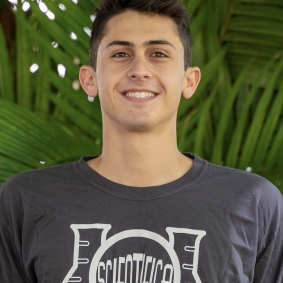Eight students will be presenting the summer work at the Ocean Sciences Meeting in March 2022!
Zachary Shamah, University of Miami
Class Year:
2021Mentor:
Jeremy Testa Ph.D. Vyacheslav Lyubchich, Ph.D.Project Title:
Short-term Salinity Forecasts in the Chesapeake Bay: Development and Methods ComparisonAbstract:
With climate change increasing the intensity and frequency of major precipitation events in and around the Chesapeake Bay, resulting changes to freshwater flow have the capability to cause large-scale alterations to natural salinity patterns in the Bay which could negatively impact important shellfish aquaculture operations. However, with most modeling studies focused on the long-term effects of environmental issues like climate change, there are relatively few studies that have attempted to provide accurate information regarding the short-term impacts that might result from these issues. Therefore, the goal of this project was to develop a short, 1–7-day salinity forecast for the Chesapeake Bay. The following three methods were used to develop forecasts: STL (seasonal trend decomposition using LOESS), non-seasonal autoregressive integrated moving average (ARIMA) model with Fourier series for seasonal regression, and LSTM (long short-term memory) neural network. Comparing the predicted salinity with the observed values in the testing set allowed us to quantify the error and therefore, the efficacy of each model. Our results showed that the LSTM model produced the most accurate 1-day forecast, with only 0.137 to 0.185 ppt of error. For 2-7-day forecasts, on average, the ARIMA-Fourier model was most accurate, although the STL model was fairly close in accuracy. Future studies attempting to improve this salinity forecast, or create a forecast for another water quality parameter, should focus on optimizing a machine learning method such as LSTM, as it shows the most promise of the 3 methods.



